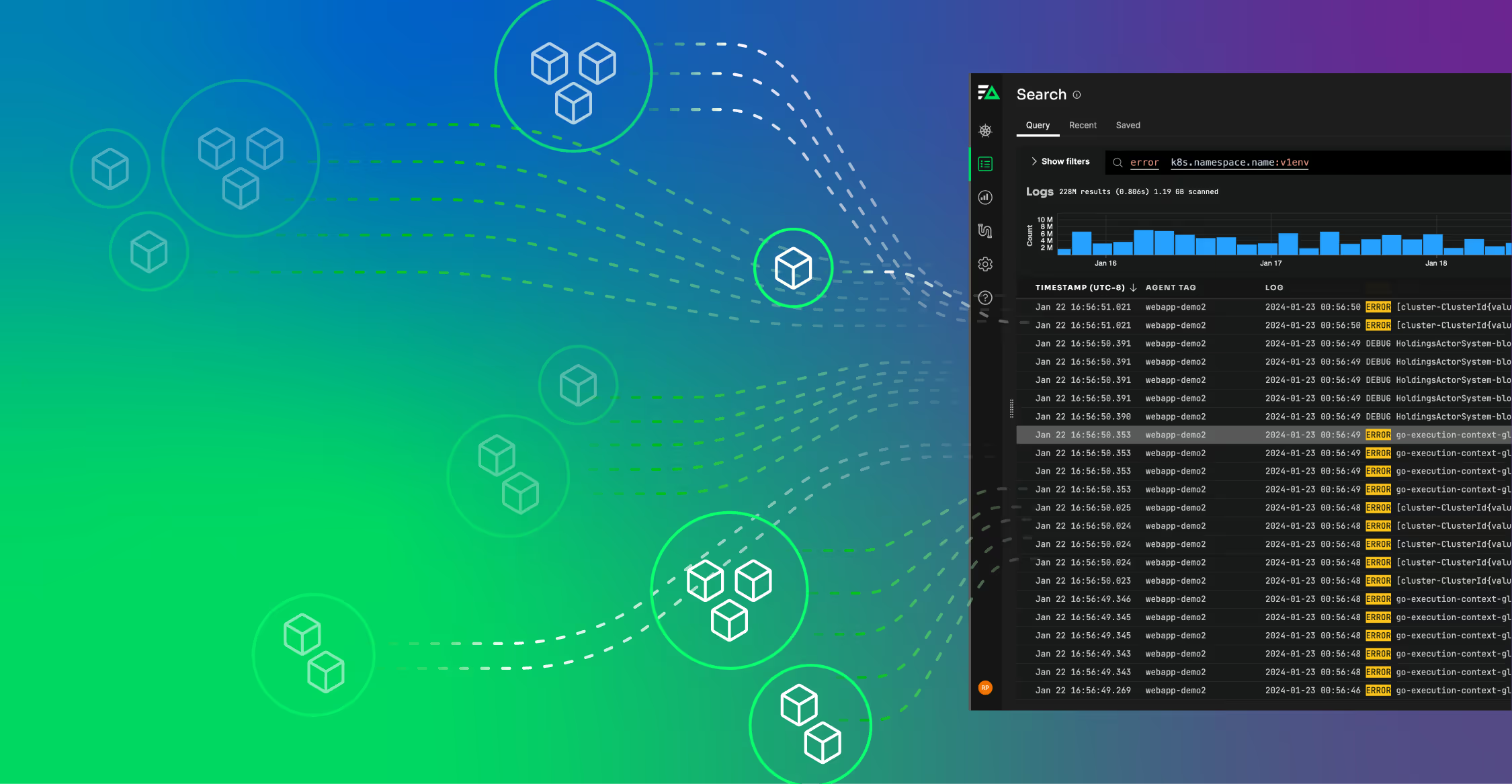Despite decades of focus and investment in security, the news remains the same: Data Security remains a concern as sensitive data is exposed, and data breaches continue to occur at an alarming rate in this digital landscape.
Statista said 8 million records worldwide were exposed during the fourth quarter of 2023. The highest record of data breaches was in 2020, with nearly 125 million data sets. Data breaches have remained a significant concern among individuals and companies, and the most common cause of this was operating system vulnerabilities on endpoint devices.
Securing private data and sensitive information is very crucial. Suppose information, such as financial data, healthcare, and personal information, gets into the wrong hands. In that case, it can put individuals at risk for fraud and identity theft.
This article will delve into relevant data security statistics and trends. You will also discover how it affects individuals and what risks it poses to industries.
Editor’s Choice
- Global cybercrime cost is expected to surge up to $13.82 trillion by 2028.
- Experts expect data security to reach $68.29 billion by 2029.
- Microsoft Leads the Data Security market players with a 23% Brand Share.
- 68% of people manage their app permission, and 59% only select allowed cookies.
- The data breach has significantly increased from $3.86 million in 2021 to $4.24 million in 2023.
- 77% of people in the UK worry about their privacy online due to privacy scandals and data breaches.
- 85% of adult online users responded they want to do more to protect their privacy, but 51% don’t know how.
- 42% of people aged 18-24 hold the most significant number of people aware of their privacy online
- The US security market was valued at $34.58 billion in 2023 and is expected to reach $71.46 billion by 2032.
Data Security Insights and Trends
Although people use data security and privacy interchangeably, these concepts are different. Data privacy directs to the proper handling of sensitive data. Meanwhile, data security protects digital information from unauthorized access, corruption, or theft.
To ensure security, confidentiality, and the availability of sensitive data, companies can implement several data security measures such as:
- Data Erasure: Employing software to overwrite data on any storage, making it more secure than data wiping
- Encryption: Using algorithms to transform regular text characters into new unreadable formats
- Data masking: Hiding personally identifiable information so developments can occur in compliant environments
- Data resiliency: Recovering from and enduring any failure, including hardware problems and power shortages that affect data availability
With effective implementation, these strategies can protect organizations’ information assets against cybercriminal activities. These strategies are worth considering since the cost of cybercrime is expected to rise from $9.22 trillion in 2024 to $13.82 trillion by 2028.
To better understand the latest data security and privacy conditions, read the following section to discover its growing market insights, key players, and more.
The Statistics on the Current Condition of the Data Security Industry
The Ponemon Institute’s Cost of Data Breach found that $8 million was the average damage cost of data breaches. Moreover, these incidents affect an average of 25,575 accounts. Besides financial loss, these data breaches also damage a company’s reputation and the trust of its customers.
Discover the data security market size and prominent security tools companies use in the following section.
The data security industry is expected to reach $68.29 billion by 2029.
(Statista, Mordor Intelligence)
Data security volume has increased due to information applications. This volume increase includes storing and mining massive data.
By the end of 2024, the data security market is estimated to reach $6.86 billion. It is also expected to be $11.19 billion by 2028, with a growing CAGR of 13.01% during its forecast period.

This trend is due to the increasing customer demand for practical security solutions. With hackers deploying more malware attacks, these solutions have become more vital. Some of the common malware attacks are:
- increase Odinaff
- Danabot
- CamuBott
- Backswap
Microsoft remains the leading data security company with a 23% market share.
(Statista)
According to Statista, Microsoft leads the global data security market with a 23% share as of October 2023. IBM is the second with a 19% share, followed by Commvault with 16%. The table below shows the top 11 key players of data security.
| Key Player | Market Share |
|---|---|
| Microsoft | 23% |
| IBM | 19% |
| Commvault | 16% |
| Others | 15% |
| Varonis | 8% |
| Cisco | 6% |
| Crowdstrike | 4% |
| Trellix | 3% |
| Mcafee | 2% |
| Palo Alto Networks | 2% |
| Proofpoint | 2% |
Antivirus is the most prominent tool in securing data, with 68% of users worldwide.
(SurfShark)
In today’s digital age, users try to make their information more private and secure online. A survey by Surf Shark showed that privacy tools have become more popular nowadays. 68% of users manage their app permission, and 59% only allow necessary cookies.

The findings show that antivirus is the most common privacy tool, with 63% usage; it is followed by ad blocker, with 39%, and password manager, with 36% usage. However, one in five claimed they feel unsafe when using a VPN.
In 2023, the average cost of data security tools reached the highest value at $4.24 million.
(Gartner)
Data breaches had a 15% increase over three years, costing from $3.86 million in 2021 to $4.24 million in 2023. Based on IBM’s report, these costs are the highest total average in the recorded 17th history report.
Organizations and businesses invest heavily in IT and data security tools to protect critical assets. Gartner’s latest forecast shows that security and risk management expenses will reach $215 billion in 2024. It’s a 14% year-over-year increase within only a year from 2023.
The highest spending growth rates in 2024 are in data privacy and cloud security. Each of these segments significantly increases with a 24% CAGR.
Privacy remains a top priority as regulations that affect the processing of personal data emerge. These regulations include those related to AI usage. Gartner predicts that by 2025, modern privacy regulations will cover 75% of the world’s population with personal data.
Besides the data security industry, it’s also crucial to understand data security awareness. The following sections show how aware users are of data security.
A Deeper Dive into Data Security Awareness: Statistics Worth Noting
In 2024, 66.2% of the world’s population will spend their time online, and privacy has never been more crucial. A Proton survey found that 77% of people in the UK worry about their privacy online due to scandals and data breaches reported in the news.

Every click leaves a digital footprint accessible to anyone in the digital realm. Thus, staying aware of ways to secure your data online is crucial. Below are some data security awareness statistics that can help you.
Out of all adults, 85% want to do more to protect their privacy.
(Norton LifeLock)
A Norton Lifelock report shows that 85% of adult online users said they want to do more to protect their privacy. However, 51% of these users still need to learn how. Here are some of the most common responses:
- 69% are more concerned about their privacy
- 61% say they are willing to compromise data privacy for their convenience
- 55% responded that fully protecting their privacy is impossible.
As more users spend more time online, understanding some trends and statistics on data privacy becomes more crucial. These numbers can help you find ways to protect your data online from potential breaches in your sensitive information.
42% of users aged 18-24 are most aware of data security.
(Cisco)
The Annual Cisco Consumer Privacy Survey shows that by age group, the 18-24-year-old age bracket has the most awareness of online privacy. 42% of users in this age bracket know their privacy online. Meanwhile, the age group 75+ obtained the lowest percentage, with only 6% understanding their privacy.

The survey also shows that 33% of the population, particularly the younger generations, exercise their Data Subject Access Rights (DSAR). Further, they leave providers over their data practices and policies.
Data Subject Access Rights (DSAR) Definition
Data Subject Access Rights, or DSAR, refers to organizations giving individuals rights to access personal data and information.
North America holds the most extensive data security market at $34.58 billion in 2023.
(Precedence Research)
With a growth of 8.40%, the US data security market, valued at $34.58 billion in 2023, can go up to $71.46 billion by 2032. North America holds most of this growth due to increased real-time responses to risks, threats, breaches, and big data.

In 2022, North America generated 33% of worldwide data security revenue. This high percentage is due to the increasing terrorist activity and incursion. Europe follows it at 29% and the Asia Pacific at 26%.
In the US and UK, 35% of organizations worry about data breaches and security.
(Statista)
A study by Statista shows that a quarter of US and UK organizations were highly concerned about data privacy law enforcement involving their company.
35% of the respondents’ concerns are about data breaches and other cybersecurity incidents. On the other hand, 20% worry about the high costs of privacy law compliance.
| Concern | Low Level of Concern | High Level of Concern |
|---|---|---|
| Data breaches/cybersecurity | 8% | 35% |
| Litigation / regulatory enforcement action | 11% | 20% |
| Loss of customer loyalty/trust (if perceived not to be respecting their privacy) | 13% | 26% |
| Not fully utilizing our data to maximize sales/revenue | 14% | 23% |
| Cost of compliance with privacy laws | 10% | 23% |
Besides the demographics, it’s also crucial to understand consumer behavior on data security. Below are some helpful statistics on the matter.
Consumer Behavior Statistics on Data Security
Aikami showed that 66% of consumers agreed and wanted more governments to pass laws like the EU’s General Data Protection Regulation (GDPR). Only 9% and 6% of consumers worldwide thought these laws were harmful and ineffectual.
The Cisco 2024 survey also stated that 94% of organizations agree that customers hesitate to purchase their products and services if they don’t think their personal data is adequately secured.
75% of adults in the UK and Spain agree that companies have more control over their data.
(YouGov)
New YouGov data shows that two-thirds of consumers worldwide feel tech companies have too much control over their data. Companies like Meta collect private data on billions of users, causing them anxiety.
75% of US and Spanish adults feel companies have more control over their data. Regions that are least concerned are Sweden, with 54%, China, and Indonesia both 56%.

Globally, 80% of consumers feel that tech companies have too much control over their data.
(Gartner)
Most consumers agree that some data types are okay for brands to collect if they help with personalization. The brand’s purchase history is one of the most acceptable data, with 80% of consumers agreeing.
77% of consumers are okay with brands collecting user-provided personal preferences. Moreover, 67% are comfortable with collecting primary demographic data. Nevertheless, some consumers prefer brands containing other data types. Only 34% of consumers worldwide think it’s appropriate for brands to collect browsing history.
Multi-factor authentication is the most common security measure used by 69% of companies.
(Netwirx)
Most companies use multi-factor authentication (MFA) and cloud backup to protect their data with added security measures. These two approaches increased in 2020, with MFA adoption growing from 57% to 69%. Meanwhile, data backup also increased from 58% to 63%
Companies’ most unfavorable security approach is implementing a cloud access security broker. Although this approach is unpopular, the adoption rate grew from 33% in 3030 to 46%.

40% of companies encountered an AI privacy breach.
With over 80% of global companies adopting AI, improving security is crucial, especially since some already experience privacy breaches related to it.
A recent S&P Global Market Intelligence report, 2024 Trends in Data, AI, & Analytics, found that 49% of companies intend to invest in AI in 2024. According to a recent Gartner survey, 40% of organizations already have privacy breaches related to AI, with one in four malicious. Legislators are recognizing that AI can pose privacy risks.
55% of leaders are concerned about the risks associated with generative AI. Yet, only 21% of organizations have in-depth guidance on how people outside of the organization can use GenAI in a way that causes reputation risks. The EU will finalize its AI Act, the first of the AI regulations, in early 2024.
Conclusion
Data security has become more significant among users and companies due to the advancement of technology. As data breaches and other incidents occur more frequently, it’s crucial to prioritize data security and implement its best practices to protect user information.
The significance of these data security statistics is undeniable. As privacy rights become more widely known and regulated, businesses must create policies to safely handle their customers’ personal information.
FAQs on Data Security Statistics
What is statistical data in cyber security?
This data is a cyber risk assessment that analyzes cybersecurity risks. It’s meant to inform stakeholders and decision-makers and to support proper risk response.
What are the statistics of Internet threats?
Internet threats have been increasing, with over 2,200 cyber attacks happening daily. In the US alone, data breaches cost an average of $9.44 million, and cybercrime can cost $10.5 Trillion annually by 2025.
How do you quantify data security?
One must measure underlying breach risk based on a per-asset and per-vulnerability to quantify data security risk. You can identify breach risk by multiplying breach likelihood by breach impact.
What are the statistics of security breaches?
Data breaches have become prevalent. Research shows that 114 publicly disclosed security incidents occurred in October 2023. This data accounts for 867,072,315 compromised records worth over 5 billion.






